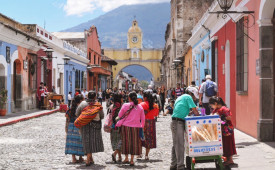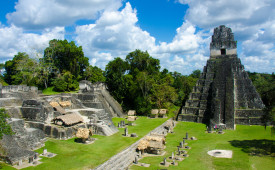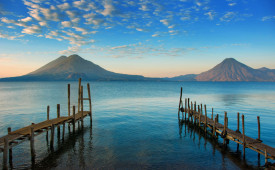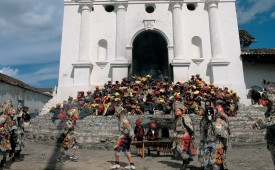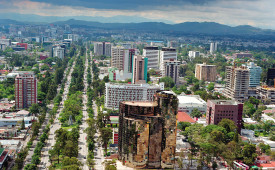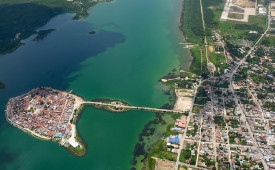-
Latin America
Latin America
- Countries (hidden space)
- Galapagos & Ecuador
- Guatemala
- Mexico
- Panama
- Peru
- Popular Attractions
- Machu Picchu
- Inca Trail
- Easter Island
- Galapagos Islands
- Patagonia
- Rio de Janeiro
- Iguazu Falls
-
Africa
Africa
- Spacer Africa
- South Africa
- Zimbabwe
- Popular Attractions
- Cape Town
- Okavango Delta
- Sossusvlei Dunes
- Victoria Falls
- The Kruger
- The Garden Route
- Masai Mara
-
Asia & Middle East
Asia & Middle East
- Asia
- Borneo (Malaysia)
- Cambodia
- India
- Japan
- Middle East
- Jordan
- Spacer Asia
- Laos
- Sri Lanka
- Uzbekistan
- Vietnam
- Popular Attractions
- Taj Mahal
- Lion Rock (Sigiriya)
- Angkor Wat
- Ha Long Bay
- Kyoto
- Petra
-
Destinations
- Latin America
- Argentina
- Bolivia
- Brazil
- Chile
- Colombia
- Costa Rica
- Galapagos & Ecuador
- Guatemala
- Mexico
- Panama
- Peru
- Asia
- Borneo (Malaysia)
- Cambodia
- India
- Japan
- Laos
- Sri Lanka
- Uzbekistan
- Vietnam
- Middle East
- Jordan
- Southern & East Africa
- Botswana
- Kenya
- Namibia
- South Africa
- Zimbabwe
- Contact Us
-
About
About
Llama Travel provides high quality holidays at the lowest possible prices.
99% recommend us Lower prices - guaranteed Financially protected by ATOL
Travelling to Guatemala
Travelling in Guatemala
-
What to pack - Guatemala
The temperatures in Guatemala can vary significantly depending where you are visiting. In the jungle lowlands of Tikal, daytime highs of over 35°C are possible. In the highlands of Lake Atitlán, temperatures at night can drop to lower than 10°C. Therefore, a variety of clothing, suitable for hot and cold weather is advisable. Rain is possible throughout the year, and can be heavy, so waterproofs are also recommended. Insect repellent is advisable, especially for jungle areas.
Electricity in Guatemala is 110V, and plugs are of the flat two-pin type.
We recommend you carry a copy of your passport with you at all times.
Please bring any medication you may require from the UK.
You can bring whichever luggage you feel most comfortable with: suitcases, soft bags and rucksacks are fine.
-
Budgeting for your stay
All hotels include breakfast, and other meals are included on some tours and excursions. However, generally, you will need to arrange your own lunches and dinners. We recommend budgeting approximately US$15 – 20 for a meal, although many restaurants have excellent value set lunches for less than this. Hotel restaurants, especially in superior hotels, can be more expensive.
Bar prices are similar to the UK and a small bottle of beer usually costs around US$2-3 in a hotel bar. This can be higher in more remote areas.
If you are planning on arranging any activities locally, these can be expensive. These can usually be paid for by credit card.
-
Food
Antigua, Guatemala’s most popular city, has many good restaurants with a wide range of national and international cuisine. Many of the best restaurants are located close to the Parque Central. One of the staples of Guatemalan food is the maize tortilla. The Guatemalan tortilla is smaller and thicker than the Mexican tortilla and you will find them served with many meals. Modern day Guatemalan cuisine also tends to combine old Maya food such as maize, beans, squashes, potatoes with the influence of Spanish food such as greater amounts of meat and European vegetables.
Chichicastenango (or Chichi as it is commonly referred to as) is a famous market town in the Guatemalan highlands. Chichicastenango hosts a twice weekly market (Thursdays and Sundays) with villagers coming from far and wide to sell their wares. The market usually starts from about dawn and lasts until 3pm. The market these days also caters for tourists and there are many stalls selling souvenirs such as masks, paintings and textiles. The market however is still widely used for trading goods between local people with the food market being particularly impressive. Chichicastenango is also home to the Santo Tomas church which was built in 1545 and is located at the heart of the market. The church itself is renowned for its half catholic and half Maya rituals which take place inside. Priests still use the church for their rituals, and it is common to see candles and incense burning inside the church. The church has 18 steps leading to it, and these represent the 18 months of the Maya calendar.
Due to Lake Atitlán’s popularity with tourists, there is a wide range of restaurants serving international and local food in Panajachel. The town of Flores, closest town to the Tikal ruins, also has a wide selection of restaurants. Some serve wild game; almost all of this has been taken illegally from reserves, so please do not order this.
-
Money
The currency in Guatemala is the Quetzal. Travellers should take local currency or US dollars and not UK sterling, which is not widely accepted in any form. Credit and debit cards (Visa, MasterCard, Cirrus) can be used in many shops and restaurants, and can also be used to withdraw money from cash machines. There are cash machines in the centre of town in Antigua, Panajachel, Flores and Guatemala City. When changing US dollars into local currency, always use a reputable place to change: banks, hotels or exchange shops. Do not change money on the street if you can avoid it. If taking travellers cheques, a high commission may be charged, especially if changing directly into dollars. Some hotels do not change travellers cheques so you may need to change them in a bank or exchange shop, therefore, please bear in mind opening hours.
It is always recommended to inform your bank that you are travelling abroad and to which countries. This will allow them to authorise money withdrawals on your account when you are away. Some banks say that this is not necessary, however, we would still recommend contact with your bank as in some cases people have had difficulty in withdrawing currency.
-
Tipping
If you receive good service, you may want to leave a tip. This is completely at your discretion. For general excursions, if you want to tip guides, US$3 – 5 per person per day is usual if you are in a group. Approximately US$2-3 is usual for drivers or transfer staff. 10% is usual in restaurants. Please give any tips directly to the person you would like to tip to ensure that they get it.

